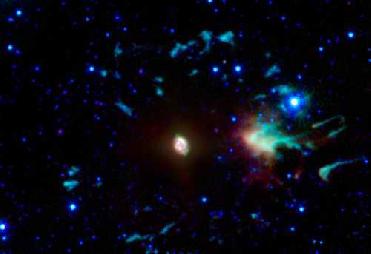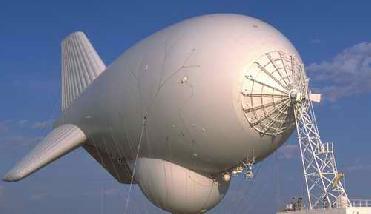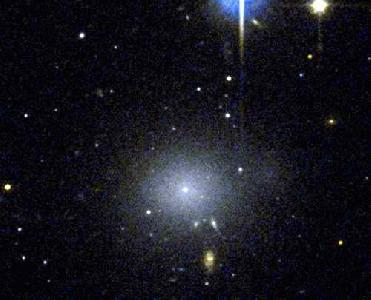
NASA image
WASHINGTON (BNS): Astronomers with the help of NASA’s Spitzer Space Telescope have detected the elusive carbon stars in the galactic center. Researchers say that the ‘Cat’s Eye’ nebula, or NGC 6543, is a well-studied example of a ‘planetary nebula.’ Such objects are the glowing remnants of dust and gas expelled from moderate-sized stars during their last stages of life, they said.
Pedro García-Lario, a research team member and faculty of the European Space Astronomy Center, the European Space Agency’s center for space science, said that the dust surrounding the stars emits very strongly at infrared wavelengths. In a paper published in the February 2009 issue of the journal Astronomy & Astrophysics, Pedro García-Lario, says that with the help of Spitzer spectra, one can easily determine whether the material returned by the stars to the interstellar medium is oxygen-rich or carbon-rich.
According to NASA, the team of scientists analysed the light emitted from 40 planetary nebulae – blobs of dust and gas surrounding stars -- using Spitzer’s infrared spectrograph.
“They analysed 26 nebulae toward the center of the Milky Way -- a region called the ‘Galactic Bulge’ -- and 14 nebulae in other parts of the galaxy. They found a large amount of crystalline silicates and polycyclic aromatic hydrocarbons, two substances that indicate the presence of oxygen and carbon,” NASA said.
The space agency said that in the Milky Way, dust that combines both oxygen and carbon is rare and is usually only found surrounding a binary system of stars. The research team, however, found that the presence of the carbon-oxygen dust in the Galactic Bulge seems to be suggestive of a recent change of chemistry experienced by the star, NASA said.
The scientists hypothesize that as the central star of a planetary nebula ages and dies, its heavier elements do not make their way to the star's outer layers, as they do in other stars. Only in the last moments of the central star's life, when it expands and then violently expels almost all of its remaining outer gasses, does the carbon become detectable. That's when astronomers see it in the nebula surrounding the star, the agency said.
Explaining his point of view, García-Lario said that the carbon produced through these recurrent ‘thermal pulses’ is very inefficiently dredged up to the surface of the star, contrary to what is observed in low-metallicity, galactic disk stars. “It only becomes visible when the star is about to die,” García-Lario said. He said that the study supports a hypothesis about why the carbon in some stars does not make its way to the stars’ surfaces.
NASA said that scientists believe that small stars, those with masses up to one-and-a-half times that of the Sun, that contain lots of metal do not bring carbon to their surfaces as they age. Stars in the Galactic Bulge tend to have more metals than other stars, so the Spitzer data support this commonly held hypothesis. Before the Spitzer study, this hypothesis had never been supported by observation, it said.
This aging and expelling process is typical of all stars. As stars age and die, they burn progressively heavier and heavier elements, beginning with hydrogen and ending with iron. Towards the end of their lives, some stars become what are called ‘red giants.’
These dying stars swell so large that if one of them were placed in the Solar System, where the sun is now, its outermost border would touch Earth's orbit. As these stars pulsate – losing mass in the process – and then contract, they spew out almost all of their heavier elements. These elements are the building blocks of all planets, including the Earth, the study noted.
 Previous Article
Previous Article Next Article
Next Article













The Indian Air Force, in its flight trials evaluation report submitted before the Defence Ministry l..
view articleAn insight into the Medium Multi-Role Combat Aircraft competition...
view articleSky enthusiasts can now spot the International Space Station (ISS) commanded by Indian-American astr..
view article